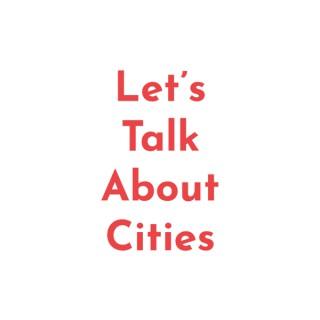Let's Talk About Cities
Follow Let's Talk About CitiesA podcast dedicated to making complex topics in architecture and urban design more accessible.
- Mar 6, 2022 LATEST EPISODE
- infrequent NEW EPISODES
- 47m AVG DURATION
- 8 EPISODES
Latest episodes from Let's Talk About Cities

Today we will introduce a slightly different form of the podcast where we talk about a current topic in a shorter episode. This time it will be about the plans of Brussels and Paris to implement large car-free zones.

In the first episode of 2022 we'll talk about participatory planning; why it's relevant, its benefits and its potential risks and obstacles. We trace a shift from top-down to more democratic planning processes and discuss examples.

In today's episode, we will talk about self-initiated housing, starting by trying to find a definition, giving some historical background information and exploring the different motives why people engage in projects like that. We will discuss the different ownership and financing models and also go into detail with one self-initiated housing project that was realized in Vienna in 2015, LiSA.We will also discuss self-initiated housing more critically and explore why its not available to many.

Today's episode is an interview we made with Santosh Kumar, a practicing architect, educator and researcher. He is the founder of the studio “Ketham's Atelier Architects” and the NGO Thinking Hand.First Santosh explains his background and how he came to found an NGO and then gives his view on the state of sustainable design before providing an insight into his Phd work on the topic of flooding and floating cities. As we live in Sweden and Santosh in Austria, we had to conduct the interview over Zoom. Therefore the audio quality unfortunately isn't the best, but we hope you will still be able to appreciate the content.

In today's episode we'll talk about ecologically sustainable planning - an important issue in the context of climate change as cities consume about 80% of all energy produced and in 2030 are prognosed to emit 74% of greenhouse gases.

In today's episode, we will talk about Red Vienna, starting by giving some historical background information and introducing the at the time revolutionary ideas that were implemented and are still relevant today. Furthermore, we will discuss how the projects were financed and also go into detail with the Karl-Marx-Hof as a well-known example for municipal housing in Vienna that still shapes the cityscape today. Lastly, we will talk about how the period of Red Vienna came to an end, in what way the development of municipal housing was continued with after WWII and look at how municipal housing in Vienna works nowadays.

In this post and podcast we discuss AirBnB: Its origins, success story and effects on cities where it is particularly prevalent. We link it to mass tourism and discuss that phenomenon in its own right and mention some possible solutions to the conflicts that can arise between locals and tourists.

In this post and accompanying podcast episode, we delve deeper into the stages of gentrification and discuss some possible measures that can be taken to deal with its effects.








